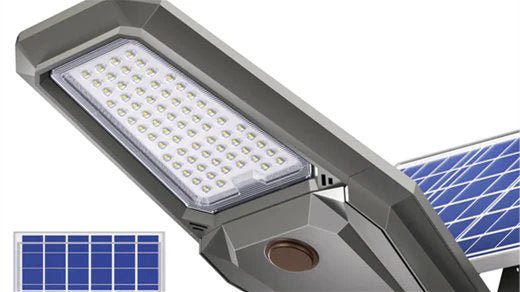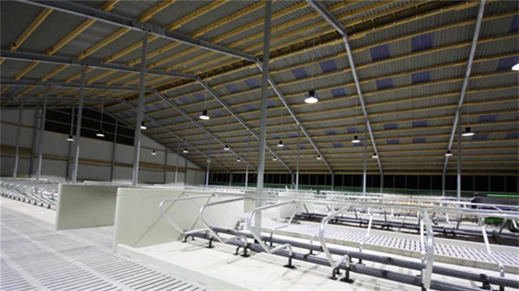Solar lights offer an eco-friendly and cost-effective solution for outdoor lighting, utilizing renewable solar energy to illuminate pathways, gardens, and outdoor spaces. Let‘s explore the types of solar lights available, key considerations for selecting the perfect solar lights to meet your needs, and practical tips for making informed decisions.
Types of Solar Lights
- Solar Path Lights: Designed to illuminate pathways, driveways, and walkways, solar path lights are typically stake-mounted and provide ambient lighting for navigation and safety.
- Solar Garden Lights: Ideal for accentuating landscaping features, solar garden lights come in various designs such as spotlights, floodlights, or decorative lanterns, enhancing the beauty of gardens and flower beds.
- Solar Security Lights: Equipped with motion sensors, solar security lights offer enhanced safety and security by detecting movement and illuminating dark areas, deterring intruders and providing peace of mind.
- Solar String Lights: Perfect for decorating outdoor spaces for special occasions or everyday use, solar string lights add a festive ambiance to patios, decks, and outdoor gatherings, powered by sunlight during the day and glowing at night.
Key Considerations for Selecting Solar Lights
1. Lighting Technology
- LED Bulbs: Opt for solar lights equipped with energy-efficient LED (Light Emitting Diode) bulbs, which offer longer lifespan, lower energy consumption, and higher brightness compared to traditional incandescent bulbs.
- Color Temperature: Consider the color temperature of the LED bulbs, which influences the ambiance and mood of the lighting. Warmer color temperatures (e.g., 2700K-3000K) create a cozy atmosphere, while cooler temperatures (e.g., 5000K-6500K) offer brighter and more vibrant illumination.
- Lumens Output: Assess the lumen output of the solar lights to determine their brightness level. Higher lumens indicate greater brightness, suitable for illuminating larger areas or providing enhanced visibility, while lower lumens are ideal for accent lighting or decorative purposes.

2. Battery Capacity and Type
- Capacity: Check the battery capacity of the solar lights to ensure sufficient power storage for extended runtime, especially during periods of low sunlight or inclement weather conditions. Higher capacity batteries offer longer operating hours and improved performance.
- Battery Type: Consider the type of battery used in the solar lights, such as nickel-metal hydride (NiMH), lithium-ion (Li-ion), or lithium phosphate (LiFePO4). Lithium-based batteries are preferred for their higher energy density, longer lifespan, and superior performance in extreme temperatures.
3. Solar Panel Quality and Efficiency
- Efficiency: Evaluate the efficiency of the solar panels in converting sunlight into electricity, typically measured in percentage (%) or wattage (W). Higher efficiency solar panels capture more sunlight and charge the batteries faster, ensuring reliable performance even in low-light conditions.
- Material and Construction: Choose solar lights with high-quality solar panels made of durable materials such as monocrystalline or polycrystalline silicon. Weather-resistant coatings, tempered glass covers, and reinforced frames enhance durability and longevity.
4. Durability and Weather Resistance
- Construction: Select solar lights constructed of rugged and weather-resistant materials such as aluminum, stainless steel, or ABS plastic, capable of withstanding outdoor elements such as rain, snow, heat, and frost.
- Waterproof Rating: Check the waterproof rating or IP (Ingress Protection) rating of the solar lights, indicating their resistance to water intrusion and dust ingress. Higher IP ratings (e.g., IP65 or IP67) offer superior protection against moisture and ensure reliable operation in wet conditions.
5. Design and Aesthetics
- Style and Finish: Consider the design and finish of the solar lights to complement the outdoor decor and architectural features of your home or landscape. Choose from a variety of styles, finishes, and shapes, including modern, traditional, or decorative designs.
- Mounting Options: Evaluate the mounting options available for solar lights, such as ground stakes, wall mounts, or pole mounts, to ensure compatibility with your installation requirements and preferences.
- By considering these key factors, including the type of bulbs and LEDs, battery capacity and type, solar panel quality and efficiency, durability and weather resistance, and design and aesthetics, homeowners can make informed decisions when selecting solar lights that meet their specific lighting needs and preferences.
How to Choose Solar Lights
- Assess Your Lighting Needs: Determine the specific areas or features you wish to illuminate and identify the type and quantity of solar lights required to achieve the desired lighting effect.
- Research and Compare Products: Explore various brands, models, and specifications of solar lights available on the market, and compare features, reviews, and pricing to make an informed decision.
- Consult Experts and Reviews: Seek recommendations from professionals, consult online reviews, and solicit feedback from other users to gain insights into the performance and reliability of different solar light options.
- Consider Long-Term Benefits: Evaluate the long-term benefits of investing in high-quality solar lights, such as energy savings, durability, and environmental sustainability, to justify the initial cost.

Conclusion
Choosing the right solar lights involves careful consideration of factors such as lighting requirements, location, durability, and energy efficiency to ensure optimal performance and satisfaction. By understanding the types of solar lights available and following practical tips for selection, homeowners can enhance outdoor aesthetics, improve safety and security, and enjoy the benefits of eco-friendly and cost-effective outdoor lighting solutions for years to come.


































Leave a comment
This site is protected by hCaptcha and the hCaptcha Privacy Policy and Terms of Service apply.